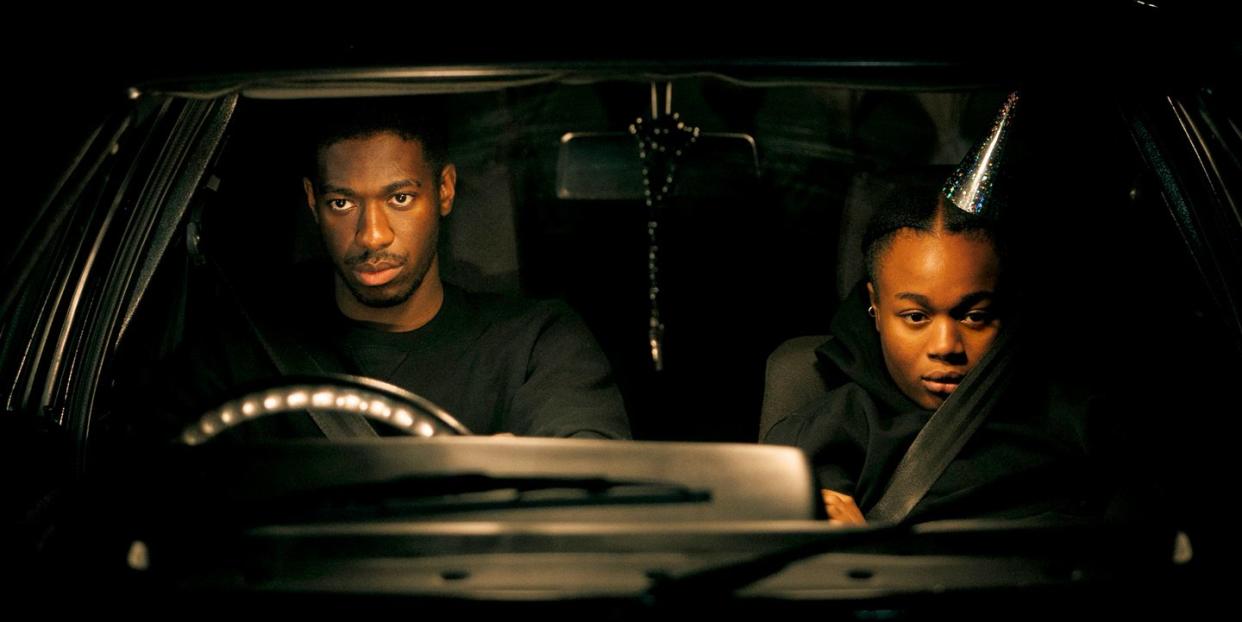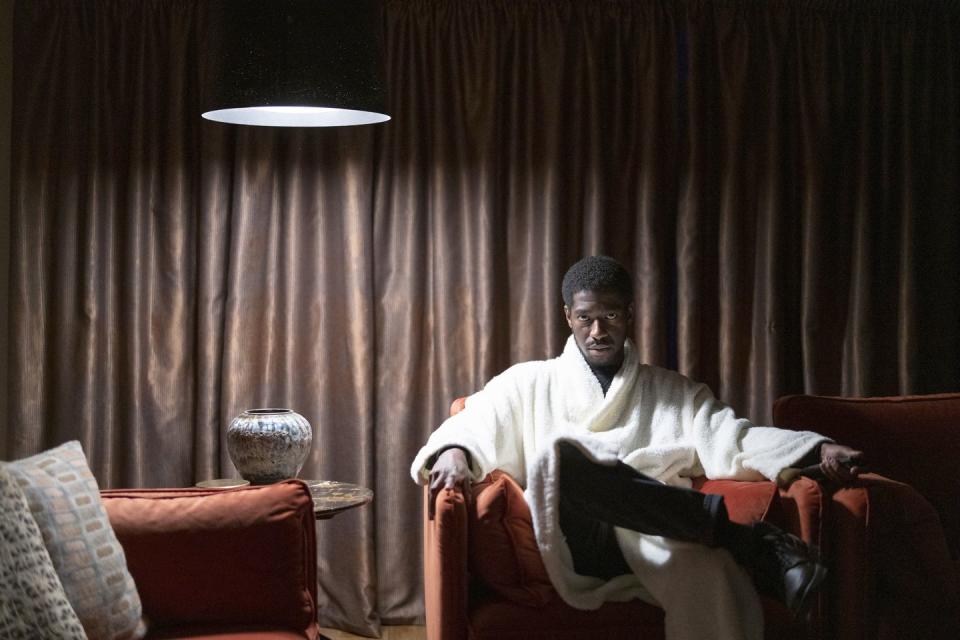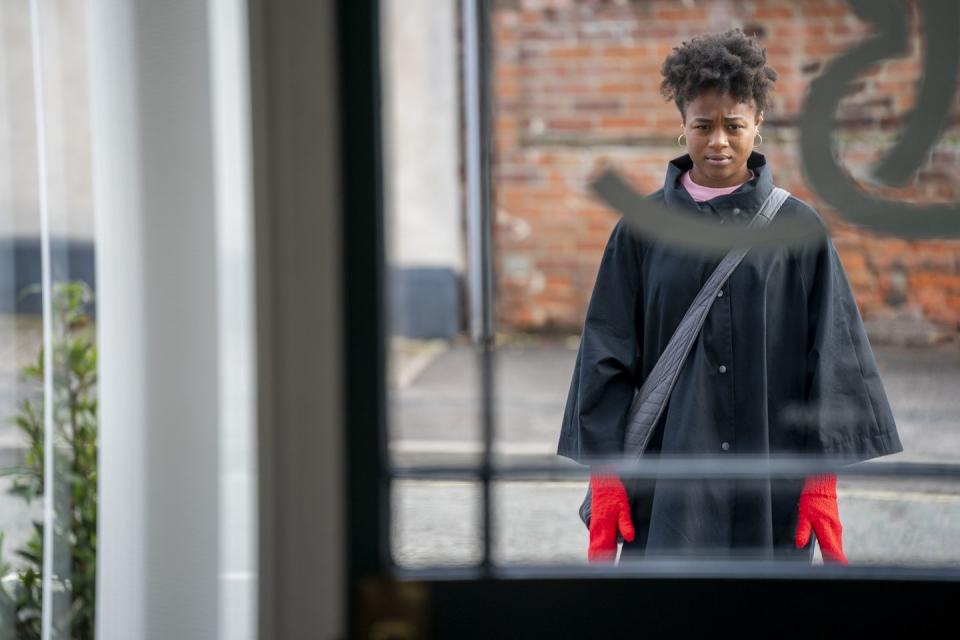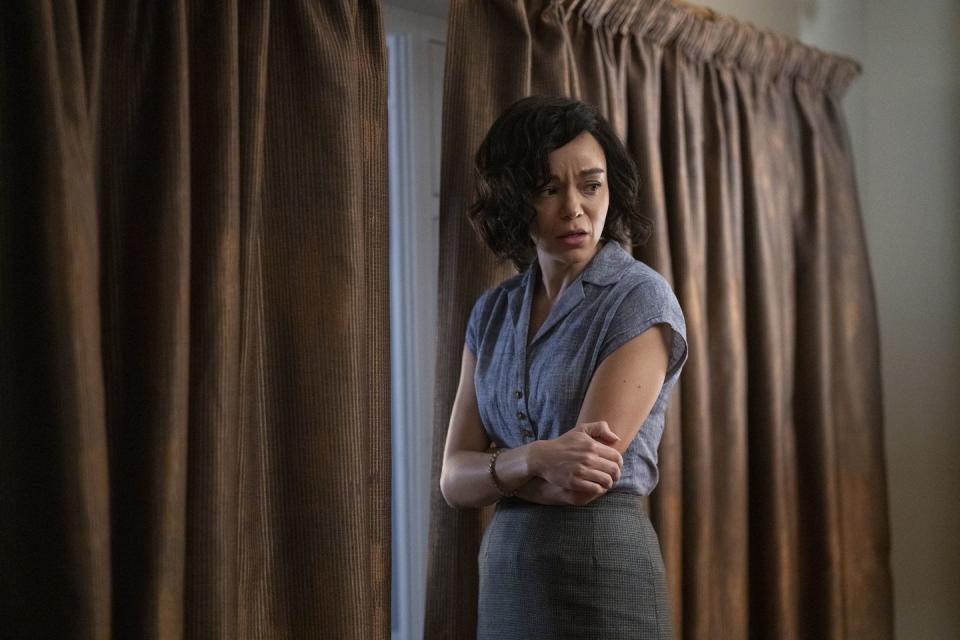Netflix's The Strays was inspired by a real-life story

Netflix has been building an impressive slate of UK movies in recent months, and The Strays is set to join the must-watch likes of I Came By, The Wonder and I Used to Be Famous.
The new thriller centres on Neve (Ashley Madekwe), an upper-middle-class woman whose seemingly perfect life in the suburbs begins to unravel when two shadowy figures (Jorden Myrie and Bukky Bukray) arrive in her town.
It's a movie that will have you gripped through to its unforgettable finale and it marks an auspicious feature debut for writer-director Nathaniel Martello-White, who you might recognise from the likes of Small Axe: Mangrove and I Hate Suzie.
So who better to talk to to get all the inside scoop on The Strays, including the true story that inspired it? Fear not, there are no spoilers ahead.
The inspiration
While The Strays is very much a fictional story, Martello-White was initially inspired by a true story for its concept.
"My mother was telling me this story about somebody she knew who was also biracial, who essentially had eloped from a life, and had remarried and inherited a lot of money in that new marriage, and had two kids who looked very fair and were almost white-passing, and was essentially presenting as someone else – and talking in a different accent.
"I was just really struck by what would make a mother do that. What would be the conditions that would make a person make that kind of decision? "The more and more we spoke about it, it was clear that this person had had a very unstable childhood, and they had probably come from a place of trauma themselves.
"So they're finding themselves in this spiral, and trying to run away from trauma. But the trauma really is alive in yourself. So no matter what you feel around you, it's always going to be there.
"It just stayed with me. I just logged it in my notepad, and I was like, 'Hmmm. I think there's something in there. I'm not sure what it is, but maybe it's a movie.'"
The challenge

Martello-White didn't want to give the audience an easy ride with The Strays, so he was careful not to offer clear sides of good and bad in its central characters.
"I was really excited about having a really divisive, controversial protagonist. But then when you get the script into development, with a movie script like that, you start to realise that people start to get uncomfortable with the fact that that's the movie you're making.
"So the most difficult thing about getting the film signed off was really humanising that character, and making sure that we all felt like, 'Right, we know that this character is going to be divisive. We know some people are going to have some real issues with the themes of abandonment and internalised racism.'
"I think I was trying to also protect the integrity of that character, and not try and make her too likeable and palatable. Because I also think with female characters – and especially women of colour – it's like, 'Let's make those characters really hopeful and really positive'.
"In fact, I think that someone like Ashley really enjoyed playing a character who got to do the things that maybe a Joaquin Phoenix would get to do in something like The Master."
The influences

A Black-led horror in the suburbs? It's got to be Jordan Peele-inspired, right? Martello-White acknowledges the Get Out vibe, but there were wider influences on his debut.
"I got Ashley to watch Funny Games and A History of Violence and Michael Haneke's Hidden, because I felt like all those three films were really great inspirations for this movie. I think what's so good about Viggo Mortensen's performance in A History of Violence is that you really don't know whether he's lying or not.
"So I think the challenge for us was to show the restlessness of a woman who's presenting as being someone that she isn't and, at the same time, she has to convince the people around her.
"With Ashley and I, we were always exploring how she is in her private space, and we can be much more explicit about the effort it takes for her to be Neve, but then when she's around people, she has to make it really seamless and just blend in.
"I think modulating that, and finding the right balance of that, was quite difficult. But we just found a sweet spot. It just has to be convincing enough, and complex enough, that people go with it. Because it's quite uncomfortable to watch, maybe.
"Someone made a point that whenever you see Black characters in suburbs, in a slightly horror space, everybody says, 'Jordan Peele'. Even in my short film Cla'am, which was a comedy-horror about gentrification where people are getting kidnapped and ground up into coffee, I was already really interested in using genre or horror to explore race.
"I think when I saw Get Out – and Atlanta, the TV show – it was more of a confirmation that you really can use genre, and you really can use these heightened spaces to explore the Black experience.
"And also, I think what is a crossover with Get Out is where you've got the Black experience really pushing up against the white experience. It's the mesh of all that stuff, and the kind of absurdity around even the idea of race and the microaggressions."
The structure

Rather than telling The Strays in a conventional manner, Martello-White chose to break the movie down into four sections, often playing with the timeline and even the character we're following.
"There's a version of this movie where you never POV-switched, and Carl (Myrie) and Dione (Bakray) are just these menacing entities. They break into the house, and it all goes crazy. Maybe it's a bit of a thrill. But, in fact, maybe we just get to the end of the film, and we don't really care about anybody.
"I wanted to pull the rug from under the audience's feet, and be like, 'These people who are menacing, and objectified on the edge of the frame, out of focus, lingering, are in fact two human beings themselves with their own really complex experience'. [I wanted] to get into the Hansel and Gretel space about abandoned children, and the trauma of that.
"And then I was really excited about pulling the rug again, because when they break into the house, you're forced into dealing with the fact that: are they villains? Or are they actually victims? Who do your sympathies lie with?
"I think that naturally fed into, 'Oh, yeah, this movie has to slightly shift gears in each chapter to sort of achieve that'."
The release

Much like fellow British thriller I Came By, The Strays is getting an unintentionally timely release as Neve's story has ties to mental health struggles and an abusive relationship, topics that have become more prevalent over the past few years.
"Hopefully it really humanises just how tough and how difficult some people's lives are, and the choices that that makes them choose. It's what that forces them to then do which isn't always good. It isn't always humane, but I think that people do extreme things in order to survive.
"We don't really want to talk about 'The British Dream'. I mean, people talk about 'The American Dream' all the time, but there is a 'British Dream', isn't there? It's owning a property, and sending your kids to a nice school, and having culture in the house, and having things which are aspirational. It's a very real, British thing.
"I think the movie hopefully hits home that, in fact, people should be able to have that sort of life, and they shouldn't have to do a deplorable thing in order to have it."
The Strays is released on Netflix on February 22.
You Might Also Like

 Yahoo Movies
Yahoo Movies 
